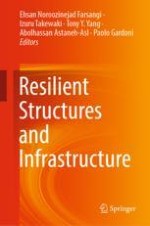2019 | OriginalPaper | Chapter
Resilience of the Built Environment: A Methodology to Estimate the Downtime of Building Structures Using Fuzzy Logic
Authors : M. De Iuliis, O. Kammouh, G. P. Cimellaro, S. Tesfamariam
Published in: Resilient Structures and Infrastructure
Publisher: Springer Singapore
Activate our intelligent search to find suitable subject content or patents.
Select sections of text to find matching patents with Artificial Intelligence. powered by
Select sections of text to find additional relevant content using AI-assisted search. powered by
